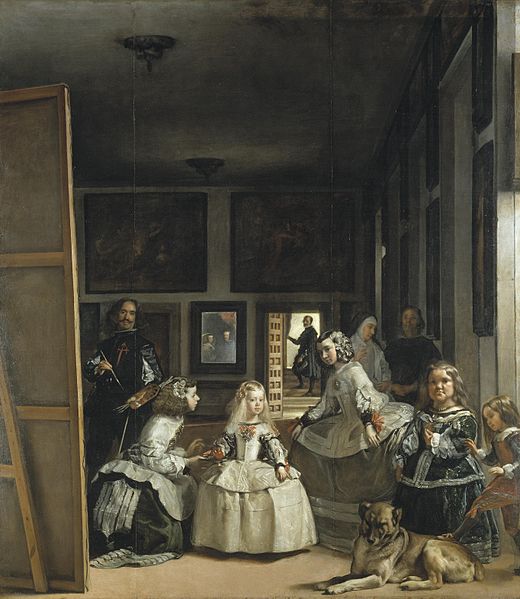start 15:30
Hola/Olá/Bonjour
I’ve been all over the Iberian pennisula this past week. My itinerary looked like this:
13/4 Wednesday: Night train to Madrid
Thu: Madrid, with Miguel, Rich, and Ariel (Olin students studying in Madrid)
Fri: Madrid, night train to Lisboa (Lisbon in portuguese)
Sat: Lisboa, with Eduardo, friend of Porguese friend Alexandre (you know the guy who’s on my blog with food :) )
Sun: Lisboa, night train to Madrid,
Mon: Madrid to Barcelona train
20/4 Tues: Barcelona
Madrid: sunny plazas
My biggest impressions is its sunny plazas. Huge open spaces surrounded by big 17/18th century buildings. My favorite is Plaza de Major:

This plaza represents 2 things I found unique about Madrid compared to Paris:
1. Lots of sun
2. Vibrancy: people seemed more energetic (and louder). I’m not trying to make a stereotype. Just my limited observations of a part of the city.
Rich, Ariel, and Miguel took me out to some tapas bars

Las meninas
This became my favorite painting after I saw it in the Prado museum:

Las Meninas by Diego Velázquez, 1656. Picture from wikipedia
At first I couldn’t understand why art critics like this so much. But afer sitting in teh room for a few minutes, I understood.
(The following “critique” comes from my own experience, and very little prior art history training)
First this painting is introspective. At the surface, Velázquez is painting the Royal family. But I think the painting is more about himself. He does this self-portrait in a creative way. Look at his face. What is he thinking? Perhaps he’s reflecting over his life as a painter. Looking at the other paintings in the museum, I realized just how unique this painting is. About all other 16th century paintings are just portraits of royalty, dramatized Biblical scenes/history, or landscapes.
Biscuits from nuns
Rich and I heard about a convent in Madrid that sells baked goods. We found the convent tucked in the corner of a unpopulated plaza. On the door: “Biscuits for sale”. Rich pressed the button and said “Dulce!” (sweets). Door opens. We walk down the corridor into a small courtyard. No one around. We walk down a hallway and run into a big lazy susan built into the wall. We heard a muffled woman’s voice form behind the lazy susan. We put money into the lazy susan. It spins, and out comes change and biscuits (with a muffled “gracias”).
 Afterwards, we go out into the courtyard and share the biscuits with our fellow voyagers from Belgium. They too read their tourbook carefully to find out about this place. Finally, the Belgian woman bursts out laughing, and we all do as well, in reflection of what just happened. A magical moment.
Afterwards, we go out into the courtyard and share the biscuits with our fellow voyagers from Belgium. They too read their tourbook carefully to find out about this place. Finally, the Belgian woman bursts out laughing, and we all do as well, in reflection of what just happened. A magical moment.
Hola/Olá/Bonjour
I’ve been all over the Iberian pennisula this past week. My itinerary looked like this:13/4 Wednesday: Night train to Madrid
Thu: Madrid, with Miguel, Rich, and Ariel (Olin students studying in Madrid)
Fri: Madrid, night train to Lisboa (Lisbon in portuguese)
Sat: Lisboa, with Eduardo, friend of Porguese friend Alexandre (you know the guy who’s on my blog with food :) )
Sun: Lisboa, night train to Madrid,
Mon: Madrid to Barcelona train
20/4 Tues: Barcelona
Madrid: sunny plazas
My biggest impressions is its sunny plazas. Huge open spaces surrounded by big 17/18th century buildings. My favorite is Plaza de Major:This plaza represents 2 things I found unique about Madrid compared to Paris:
1. Lots of sun
2. Vibrancy: people seemed more energetic (and louder). I’m not trying to make a stereotype. Just my limited observations of a part of the city.
Rich, Ariel, and Miguel took me out to some tapas bars
Las meninas
This became my favorite painting after I saw it in the Prado museum:Las Meninas by Diego Velázquez, 1656. Picture from wikipedia
At first I couldn’t understand why art critics like this so much. But afer sitting in teh room for a few minutes, I understood.
(The following “critique” comes from my own experience, and very little prior art history training)
First this painting is introspective. At the surface, Velázquez is painting the Royal family. But I think the painting is more about himself. He does this self-portrait in a creative way. Look at his face. What is he thinking? Perhaps he’s reflecting over his life as a painter. Looking at the other paintings in the museum, I realized just how unique this painting is. About all other 16th century paintings are just portraits of royalty, dramatized Biblical scenes/history, or landscapes.
No comments:
Post a Comment